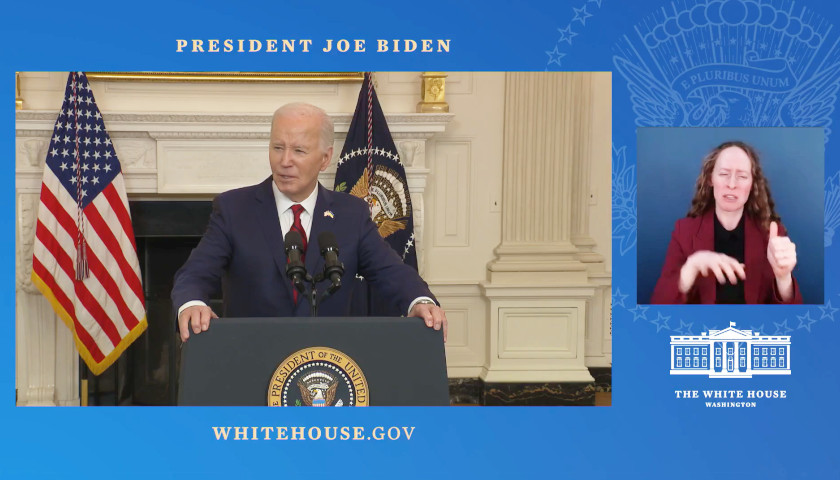Students attending K-12 public schools in Ohio are performing just as poorly on standardized tests a full six years after Common Core State Standards (CCSS) were fully implemented in the state during the 2013-2014 academic year.
“Common Core is as big a change in education as Obamacare is in health care, but unlike Obamacare it needed no votes in Congress to become national policy,” Joy Pullman, executive editor of The Federalist, wrote in her 2017 book, The Education Invasion: How Common Core Fights Parents for Control of American Kids.
These controversial K-12 public education standards, “garnered practically no notice from the media before the Obama administration, in concert with largely unelected state bureaucrats and a shadow bureaucracy of private organizations, locked it in nationwide. That meant no public debate before the scheme was imposed upon a country supposedly run with the consent of the governed,” Pullman observed.
Common Core State Standards were adopted in full or in part by the governments of 46 states beginning in 2009, the first year of the Obama administration. Ohio began with partial adoption of those standards but moved to full implementation during the first year of President Obama’s second term in 2013.
Despite the hype from the public education establishment the results of these new standards upon student performance, both in Ohio and around the country, have not been good. Common Core, Pullman wrote, “falls short in building a solid foundation of cultural knowledge and in teaching practical skills.”
In Ohio, the most recent data from the “Nation’s Report Card” using the National Assessment of Education Progress (NAEP) reveals a drop in 8th-grade math scores when compared with the previous year and after implementation of CCSS. The 4th-grade math scores, as well as the 4th-grade and 8th-grade reading scores, showed no significant changes.
Numerous bills have been introduced to repeal Common Core in Ohio. Facebook groups have been created to oppose it. Ohio’s Future Foundation has started a petition to repeal it. Ohio got rid of the PARCC (Partnership for Assessment of College and Careers) exam -a CCSS oriented test- after just one year and received “boxes of complaints” from parents, students and teachers.
National Results

Teal: States that have partially adopted the Standards
Yellow: States that adopted but later repealed the Standards
Brown: States that never adopted the Standards.
Image by Media Kill. CC BY-SA 4.0.
Research investigating whether CCSS has had a positive or negative impact has been ongoing. A 2015 report by Tom Loveless for the Brookings Institute of results around the country found the early impact to be “…quite small, amounting to (at most) 0.04 standard deviations (SD) on the NAEP scale.”
A “standard deviation” is a measure that is used to quantify the amount of variation or dispersion of a set of data values. According to Loveless, “A threshold of 0.20 SD—five times larger—is often invoked as the minimum size for a test score change to be regarded as noticeable.”
More recently, the 2018 Brown Center Report shows both math and reading scores have dropped in 4th and 8th grades. By 2017, all states had implemented CCSS, although nine states have either never accepted the standards or have repealed them. Of those nine, Montana only used the English Language Arts CCSS standards, and not the math standards.
Another significant change following the wide acceptance of CCSS is the drop in the number of states using the tests designed specifically to align with the standards. Initially, 45 states agreed to use either Smarter Balanced or PARCC as their statewide assessment tool for the Common Core State Standards. That number has dropped to just 16, including the District of Columbia, as shown on the map provided by Education Week.
 Many teachers are unenthusiastic about CCSS, while others consider them just another requirement of their jobs.
Many teachers are unenthusiastic about CCSS, while others consider them just another requirement of their jobs.
At TeachHub, Jacqui Murray said that “the biggest pedagogic change to American education since the arrival of John Dewey is happening right now. It’s called the Common Core State Standards. Its goal: to prepare the nation’s tens of thousands of students for college and/or career.”
“If you are involved in any part of teaching, administrating, or planning, you are holding your breath, downing an aspirin, and crossing your fingers, knowing a storm is about to hit. You’ve prepared, but is it enough?” she added.
Common Core State Standards do not appear to be preparing students for college or careers.
One college entrance exam, the ACT, breaks down the “percent of college students who met college readiness benchmarks” for 2014 through 2018—after most states implemented CCSS.
The percentages of students “ready” for college fell in reading, from 64 percent in 2014 to 60 percent in 2018, and math, from 43 percent in 2014 to 40 percent in 2018. Reading readiness stayed roughly the same, fluctuating between 44 percent and 47 percent over the five year period and ending at 46 percent for 2018.
The most recently available ACT scores place Ohio students behind the national averages by 0.9 points in English and 0.2 points in math.
Even Bill Gates, a long-time supporter and major funder behind CCSS, realizes they are not doing well.
“Bill Gates tacitly admits his common core experiment was a failure,” author Joy Pullman notes.
– – –
Beth Lear is a reporter at The Ohio Star. Follow Beth on Twitter. Email tips to [email protected].






[…] Core for years and another bill is expected from legislators in the next few months. The Ohio Star discovered that students have not improved in the state since Common Core was accepted. One major complication […]
[…] Core for years and another bill is expected from legislators in the next few months. The Ohio Star discovered that students have not improved in the state since Common Core was accepted. One major complication […]
[…] Core for years and another bill is expected from legislators in the next few months. The Ohio Star discovered that students have not improved in the state since Common Core was accepted. One major complication […]
[…] Core for years and another bill is expected from legislators in the next few months. The Ohio Star discovered that students have not improved in the state since Common Core was accepted. One major complication […]
[…] Core for years and another bill is expected from legislators in the next few months. The Ohio Star discovered that students have not improved in the state since Common Core was accepted. One major complication […]